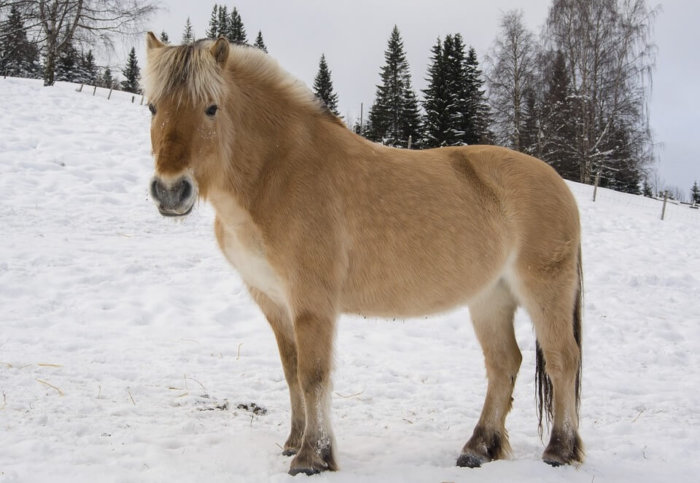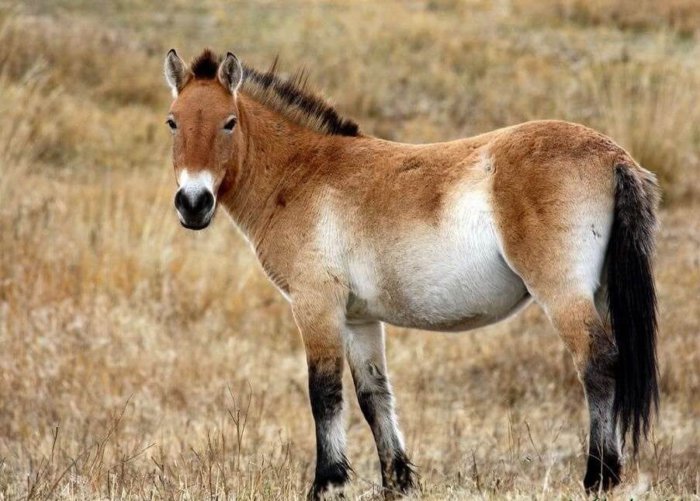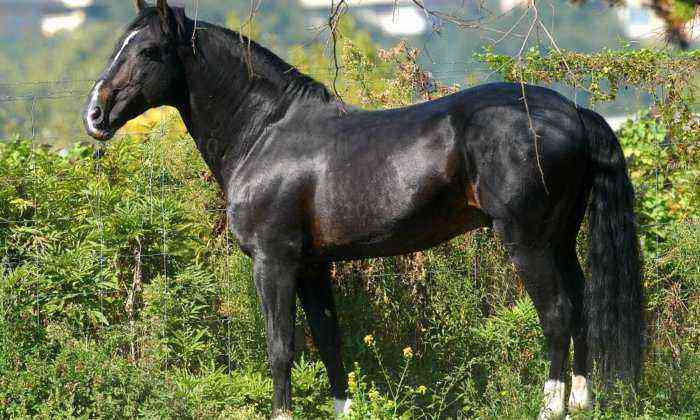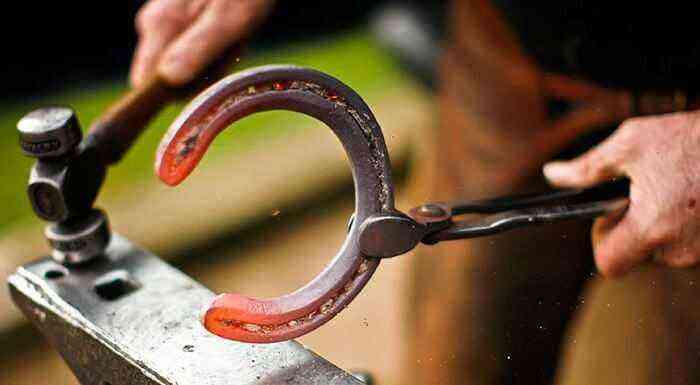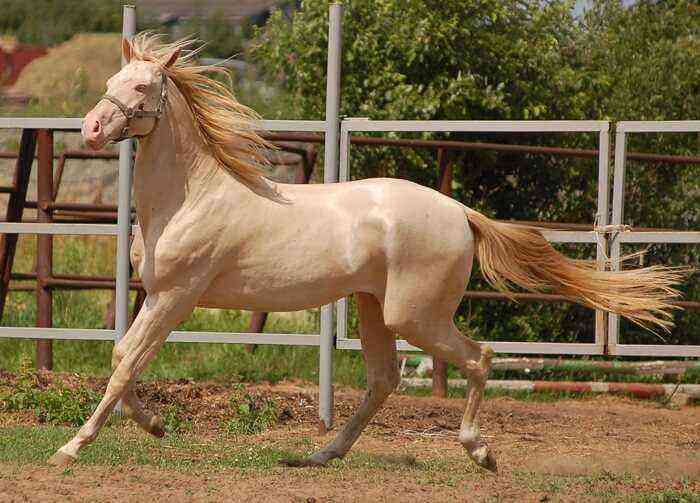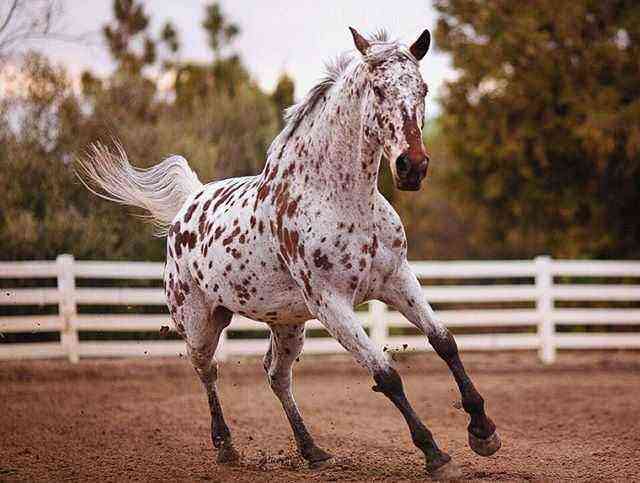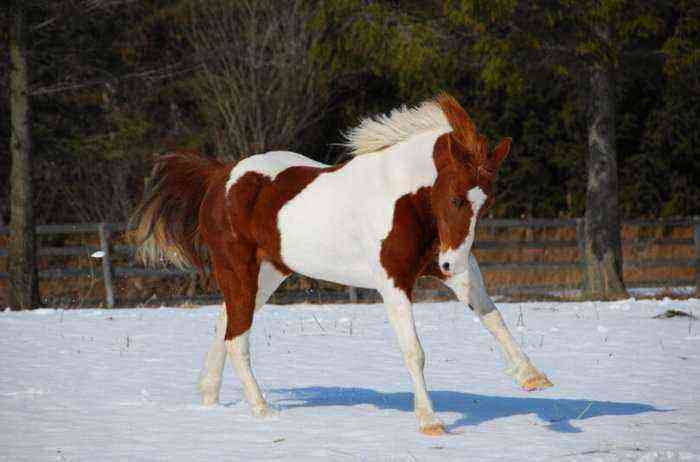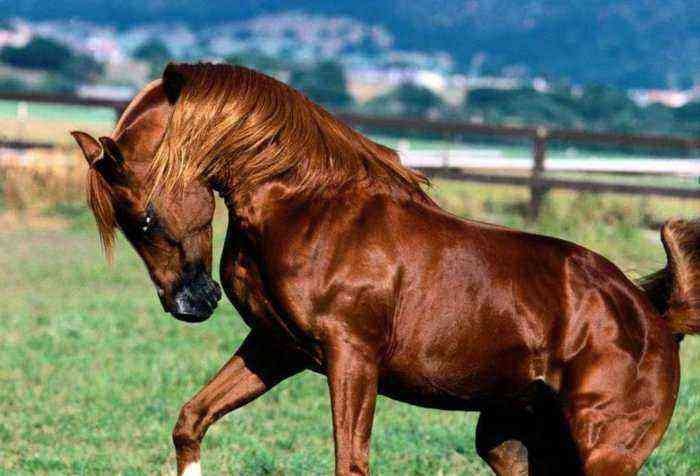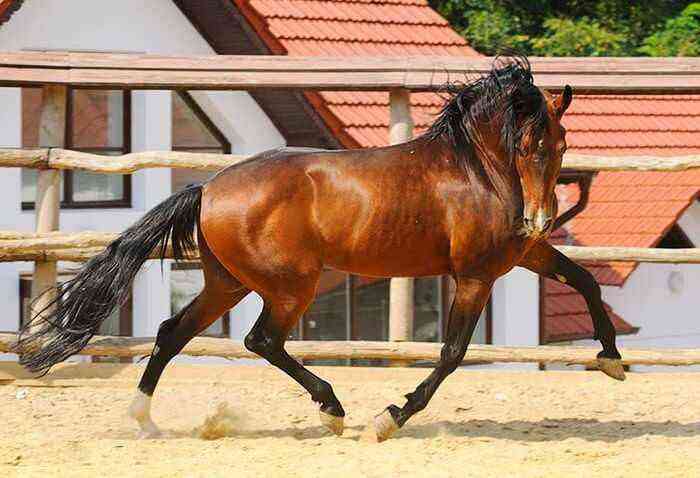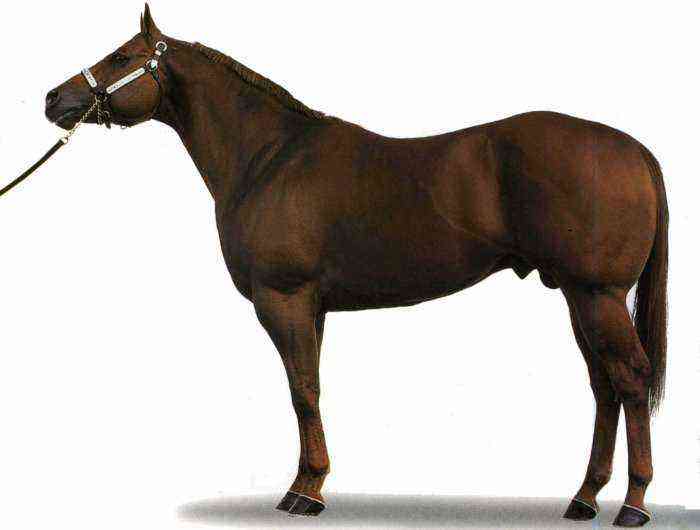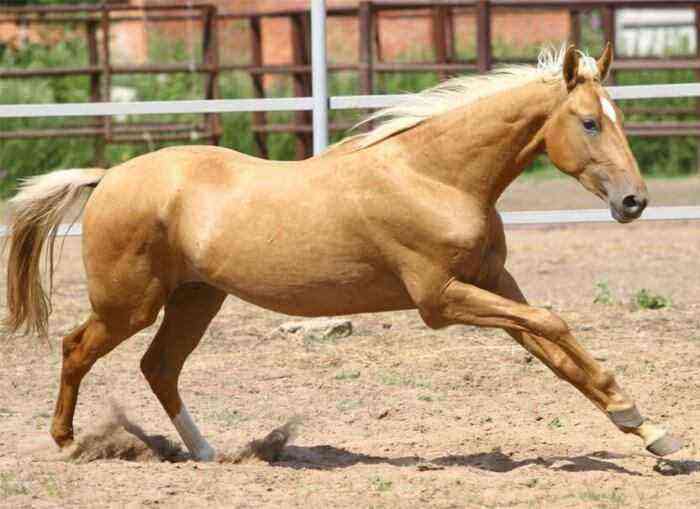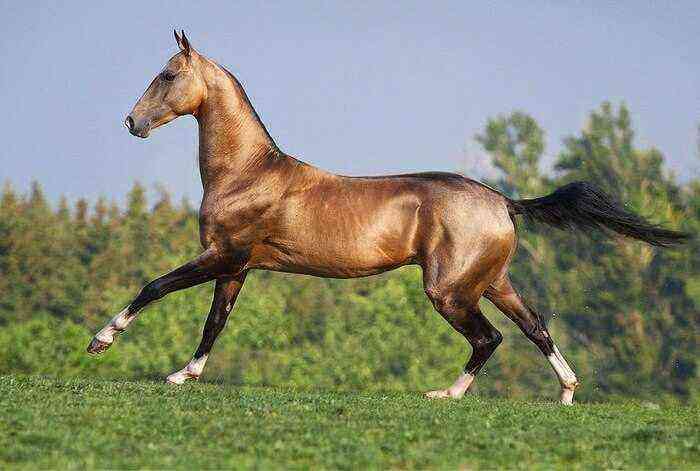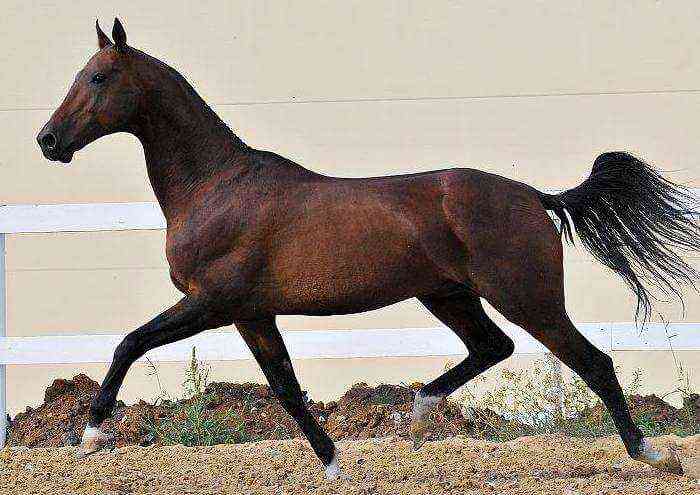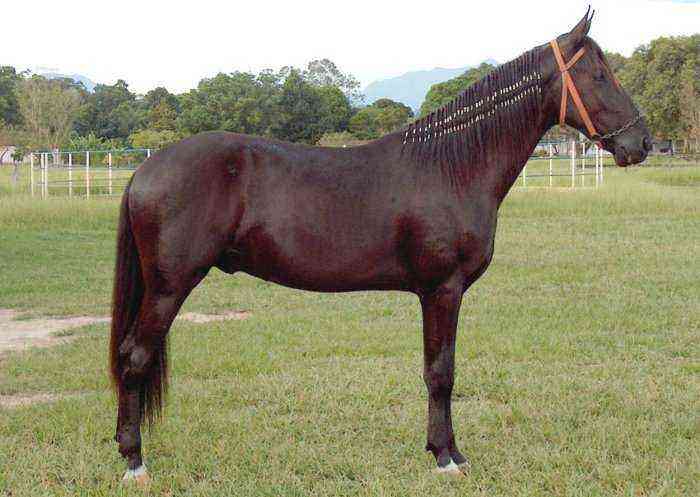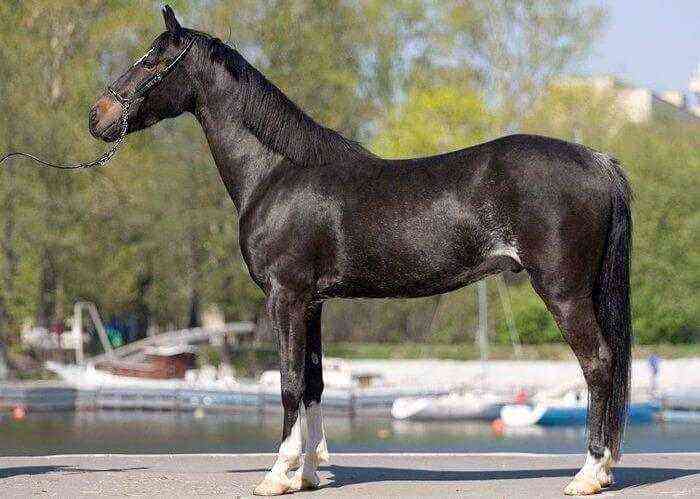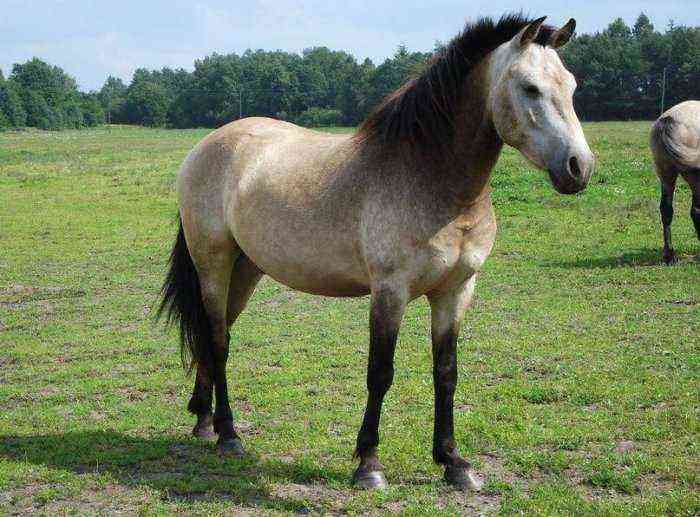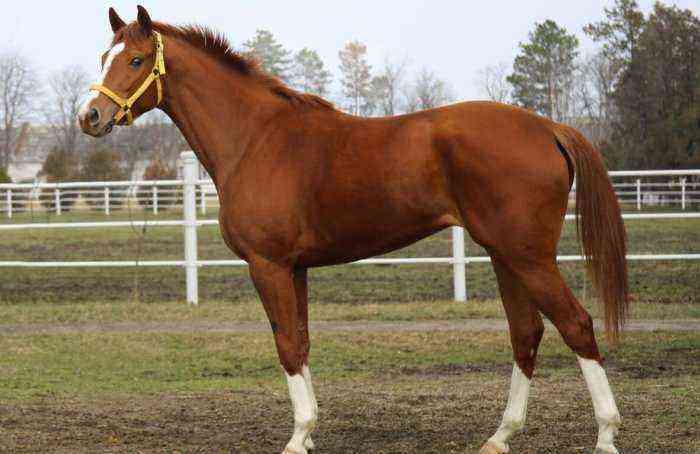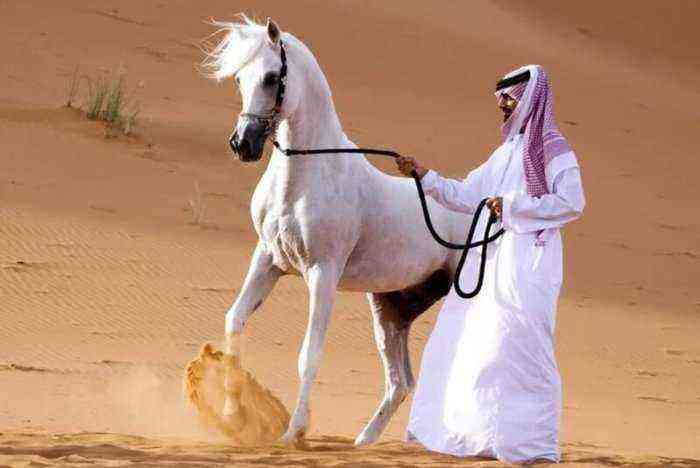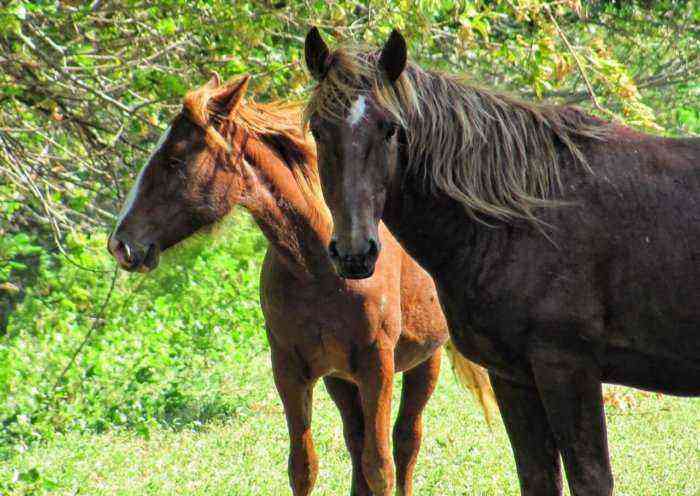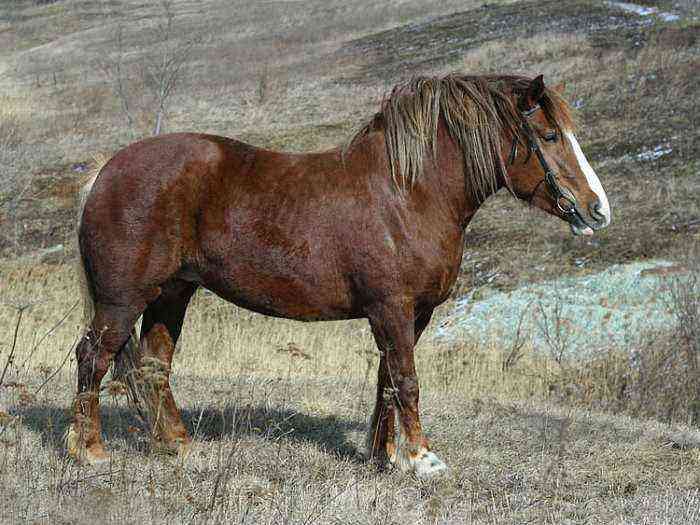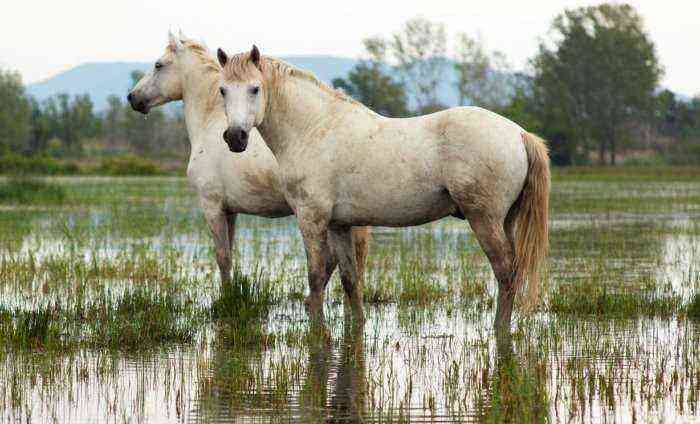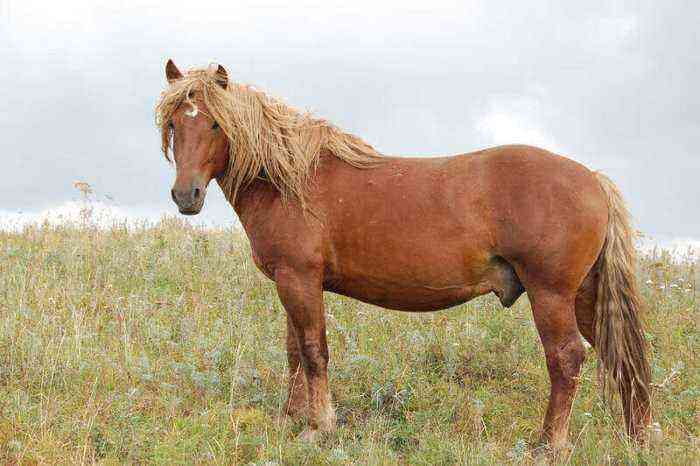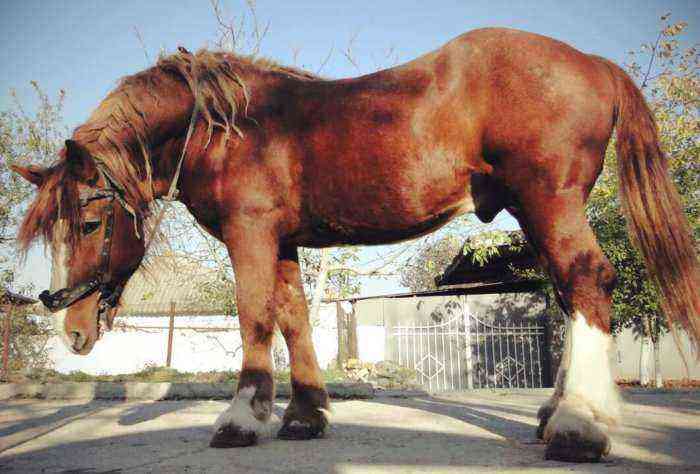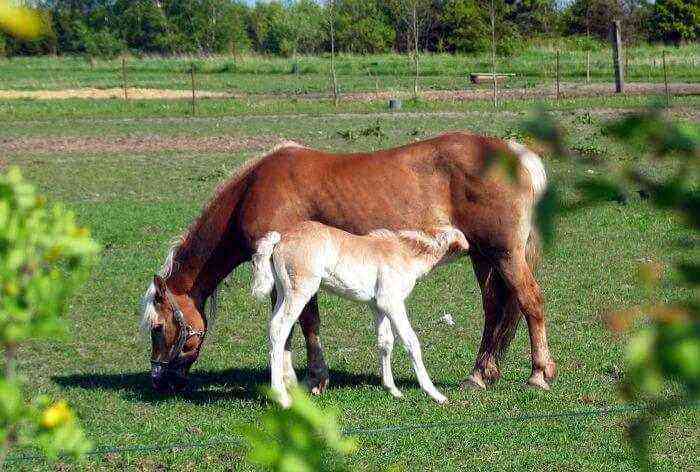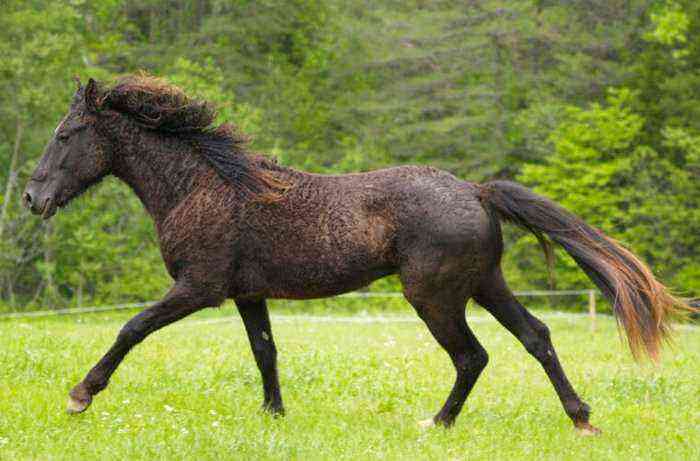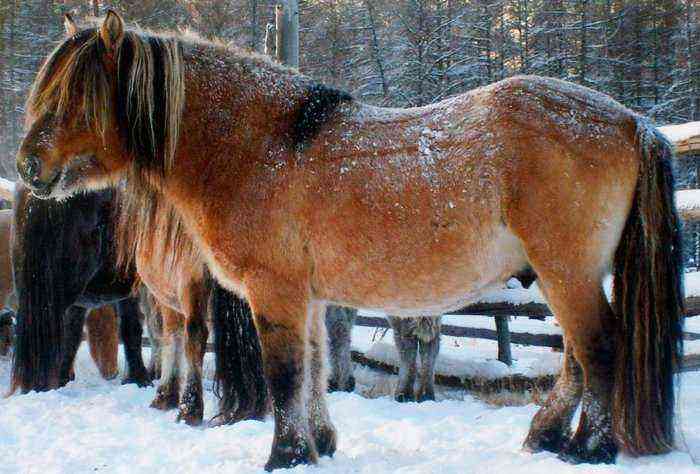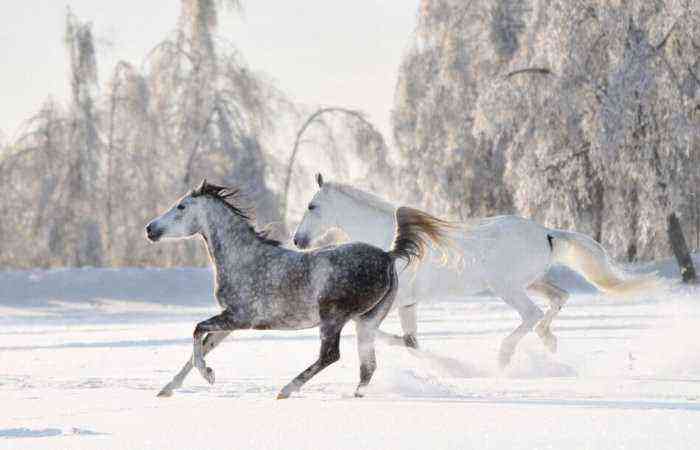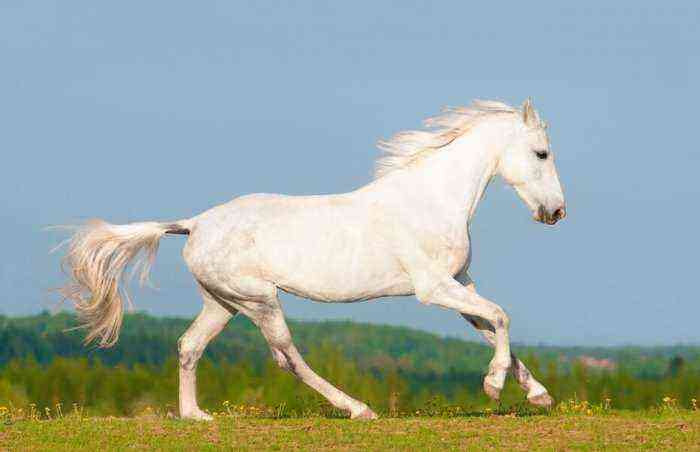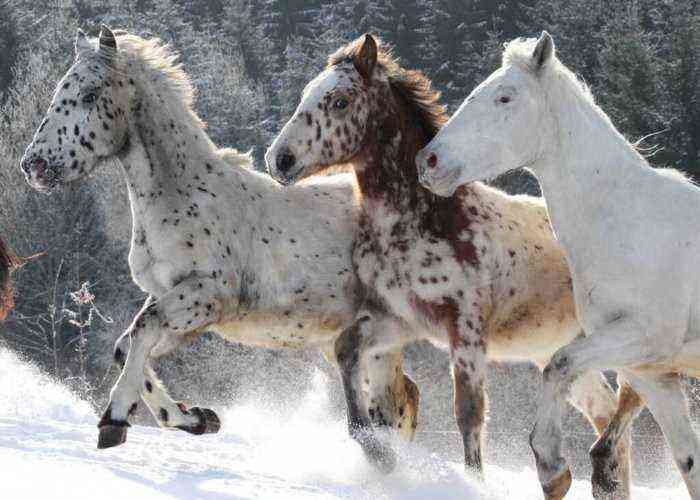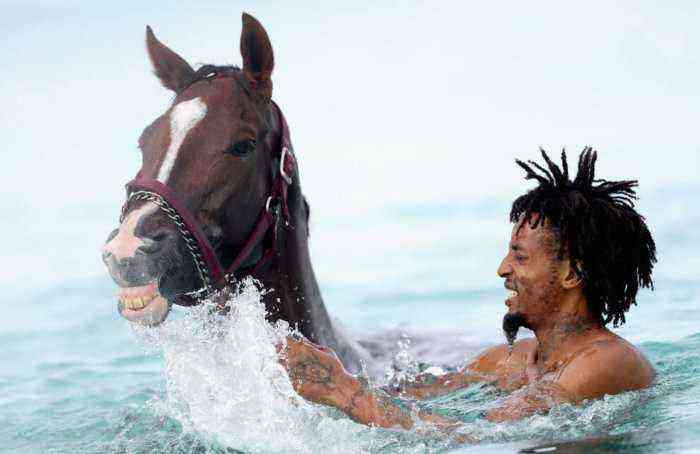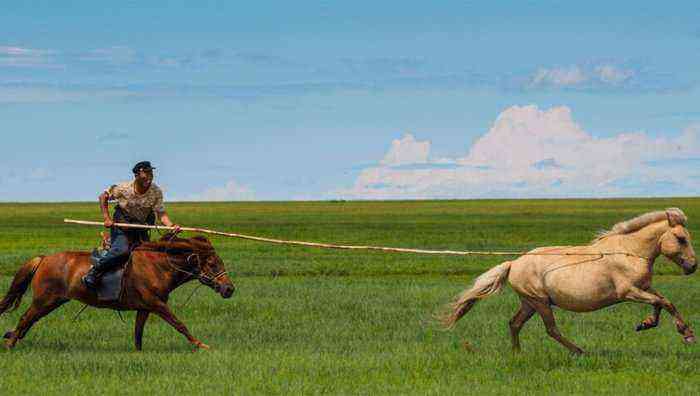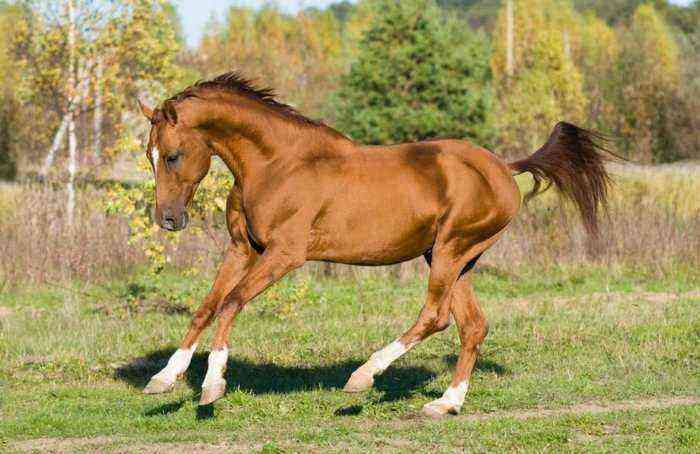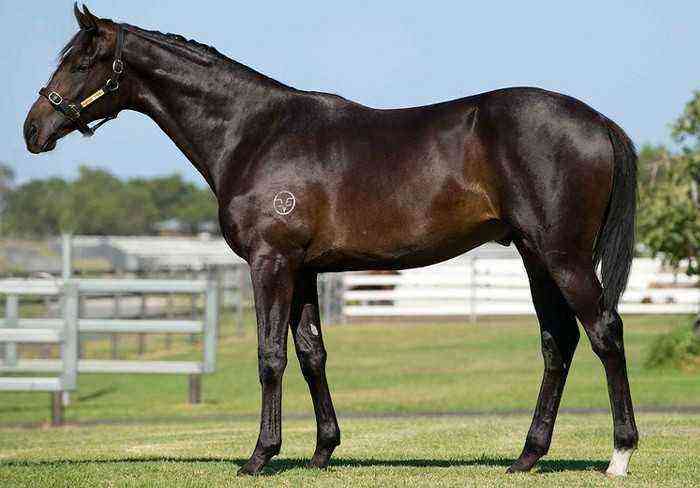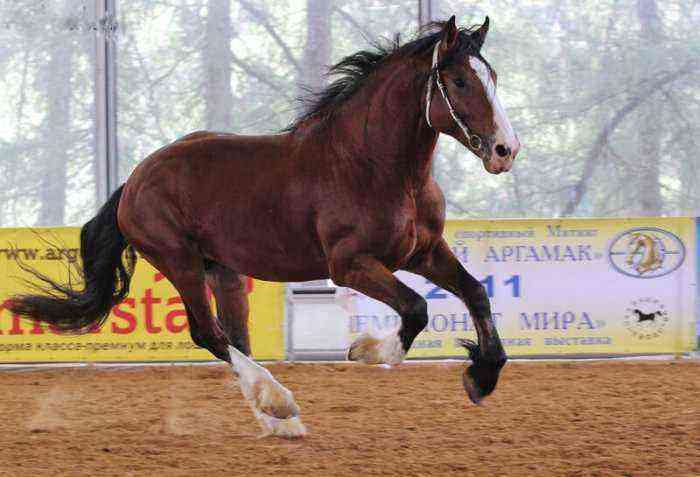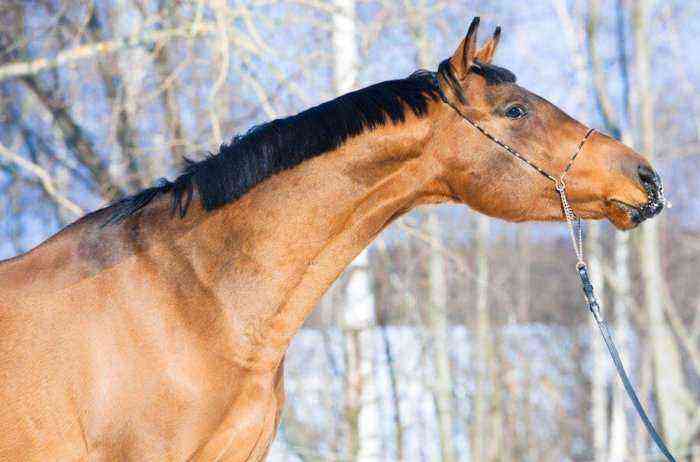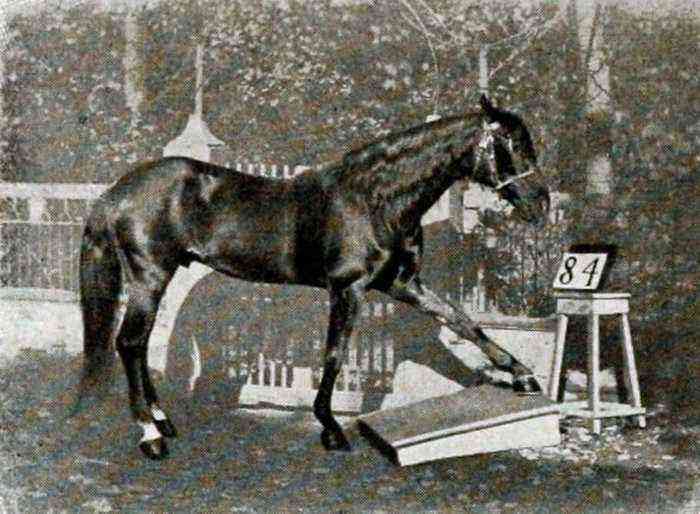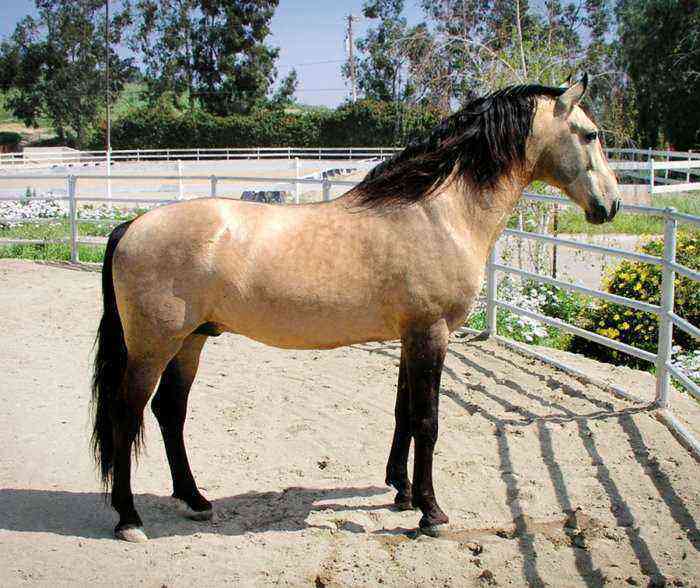Savrasaya horse color is inherited by modern breeds from their ancestors with little or no change. This combination of colors and shades is formed by nature and is not the result of the work of breeders. Moreover, this feature of appearance is found in several breed lines of animals at once and has different variations.
Savras horse color
Description of savras suit
The name of this suit was formed several centuries ago. It probably appeared on the territory of Central Asia. Translated from one of the languages of this region, the word means “pure yellow.” In fact, such a name suits the color.
The savras suit is characterized by the following features:
- most of the horse’s body is colored mainly in light red color, which is secondary;
- a dark (most often brown) belt runs along the back from the base of the tail to the withers, it represents the main color;
- the head of the animal can also be painted in the main more saturated color;
- some representatives of the suit have completely light extensive spots on the peritoneum and the inside of the limbs .;
- the main color can also be traced on the tail and the end of the legs of the horse.
It is worth noting that the color of the head may vary depending on the variations in the color of the animal. In red-savras living creatures, the head is painted red. For horses with a predominance of bay and tan as the main color, head coloring will also be appropriate.
In addition to the listed main points of the exterior of stallions with a savras color, they can also have other, rarer features. These include:
- Snow-white strands in the tail and mane, which stand out strongly against the background of other, darker hair.
- Dark horizontal stripes on limbs. They are also called zebroids. Such lines are painted in the main color and practically pass into a continuous spot in the lower part of the legs. Above the hock, the zebroid becomes more pronounced.
- Dark netting or stripes on the horse’s forehead. This pattern is quite rare and can be very different for different carriers. Professional breeders dubbed it “web”.
- A dark line running from the withers to the shoulders. She received the name “wings”. They are located across the body of the animal. Most often, this feature of appearance is manifested in representatives of the Bashkir breed.
It is generally accepted that savrasaya does not belong to the main group of suits. This coloration is considered “wild”.
Genetics
All of the listed features of the appearance of Savras horses are dictated by a specific dominant gene, which is called DUN. Its main task is to lighten the hair on the body, legs and neck of animals. But, at the same time, its action does not apply to the hair of the mane and tail. Also, only red and black wool is subject to clarification.
This feature of genetics is considered by most researchers to be the natural defense mechanism of wild horses, which has been formed over many thousands of years. Such disguise hid the herds in the high vegetation of the steppes, which made them more invisible to large predators. This allowed to save the number of animals.
Reference. On the basis of studies of the DUN gene and the breed lines in which it manifests itself, they can rightly be attributed to the most ancient on the planet.
Suit types
This gene provides the savras suit with a characteristic zonality of color. But it does not imply a specific combination of colors. Therefore, this category includes several types of colors at once. The main ones include:
Varieties of suits
- Bay-savrasy look. In such animals, the body, head and partially limbs are painted in a pale brown color. Moreover, it can be either very faded, or, conversely, dark. In the first case, off-white or brown color in light colors prevails. In the second, the shade of the body and head is darker, and the belt, mane hair and tail are completely black.
- Bulano-savrasy type. This suit most clearly repeats the coloring of wild horses. The color of the body, neck and head varies within several shades of yellow. The mane, belt, tail and bottom of the legs are black. At the same time, completely light hairs are often found in them.
- Grey-gray type. It is rather one of the varieties of bay-savras. The color of long hair is brown, but may include gray strands. The secondary color on the body is beige with slight admixtures of gray. A distinctive feature of this species is also the expressive dark brown “wings” that run from the withers to the shoulders. This coloring is most often seen in young Przewalski’s horses.
- Raven-gray appearance. The body color of representatives of this type of suit is heterogeneous and includes gray, brown and black hair. The mane, belt and tail are black. Separate variations of this coloring suggest the presence of light spots in the eye area, as well as on the buttocks and lips.
- Red-brown color. It suggests a combination of a light reddish body with a brown belt along the spine and a heterogeneous mane, in which white, brown and red hairs appear. Often the coloring is complemented by striped legs.
In addition to the standard, each of the listed types is found in several variations that differ in shade.
Breeds of horses of savras suit
Savrasaya suit is found in various breeds of horses. Moreover, each of them inherited it from their ancestors who lived several thousand years ago. To date, the most popular breed lines of this suit include three:
- Fjord.
- Bashkir.
- Przewalski’s horse.
Fjord
Small horses of the fjord breed come from Norway, or rather from its western regions. They have lived in Scandinavia for centuries and have an ancient history.
Initially, all fjords lived in forests. Approximately 2 thousand years ago they were domesticated by the local population. Initially, they were used by the Vikings in military campaigns. But with the onset of more peaceful times, such living creatures were gradually retrained to work in the fields and transport goods.
The growth of such horses, as a rule, does not exceed 154 cm. They have gained wide popularity in everyday life and military affairs due to a wide range of advantages. The main among them are:
- extraordinary endurance;
- force;
- calm good disposition;
- resistance to various diseases.
Tellingly, the fjords have survived to this day unchanged. In the entire history of these animals, they have never been crossed with other varieties of horses.
Small fjord horses
As for the color of such living creatures, light brown color prevails in it. The limbs, head, neck and body of the animal are painted in it. The mane of these horses has a special structure. Along its entire length in the center is a black hair. On the sides of the central row complement the rows of blond hair. Given this feature, pet owners often trim the dark part less than the light part, which gives the mane originality.
Bashkir
The Bashkir variety comes from the crossing of forest horses that lived in the forests in the north of Bashkiria and steppe horses from Asia. Most researchers argue that the Bashkir horses inherited their wild and unbridled temper, which they are widely famous for, from tarpans. From them comes the color of animals. Today, Bashkiria, Kalmykia and Tatarstan are the main area for breeding livestock of such horses.
Horses of this variety are used for riding and sledding. They are distinguished by outstanding endurance, unpretentiousness to the conditions of detention. In addition, such living creatures feel good even in severe frosts. Since ancient times, these horses have been kept on year-round grazing. In winter, they independently find their own food, breaking the snow mass and looking for dry grass and branches. They are driven into special covered pens only during strong winds or snowstorms.
It is worth noting that one of the main features of the Bashkir horses is their proud and masterful disposition. They are extremely wary of strangers, and sometimes with aggression. Moreover, the stallion drives away all uninvited guests from the herd, with the exception of those people and animals that he is used to.
In addition to being used for riding and transporting goods, Bashkir horses also provide owners with a lot of milk. The average milk yield of one mare per year is from 1500 to 2000 kg.
Przhevalsky
Representatives of this breed line combine the features of two types of animals at once. A variety appeared during the wild crossing of donkeys from Asia with tarpans. These horses have not been domesticated to date. Their livestock was sharply reduced, the remaining representatives were not included in the World Red Book. Today they can be found in zoos and protected areas in many countries.
The date of discovery of the breed was 1879. This merit belongs to the researcher N. Przhevalsky, in whose honor the variety was named. He discovered a whole herd of such animals in the wild.
Przewalski’s horse
The main exterior features of this horse include the following:
- light weight, which, as a rule, does not exceed 350 kg;
- muscular, broken body;
- a strong head, outwardly resembling the head of a donkey;
- the neck is short, thick;
- squat limbs;
- long, almost reaching the ground, tail;
- the mane is short and sticks up.
The color of the living creature is red. Moreover, its tone changes from the back to the stomach from dark to lighter. The tail is black. The mane is a mixture of black, red and blond hair. The end of the muzzle of the animal is painted white.
In the wild, Przewalski’s horses lead a group lifestyle. Each group includes 5-10 mares and one large stallion who is the leader of the group. The shoal spends the whole year grazing in the steppes. But even with a minimal threat, the taboo quickly moves to remote areas where a predator cannot reach them.
Savrasaya suit with its inherent zonality is considered to be the most ancient. Such a genetically determined feature of the horse’s appearance was inherited from wild ancestors. At the same time, the exterior of the breeds in which such a color is fixed evokes surprised looks even today.

